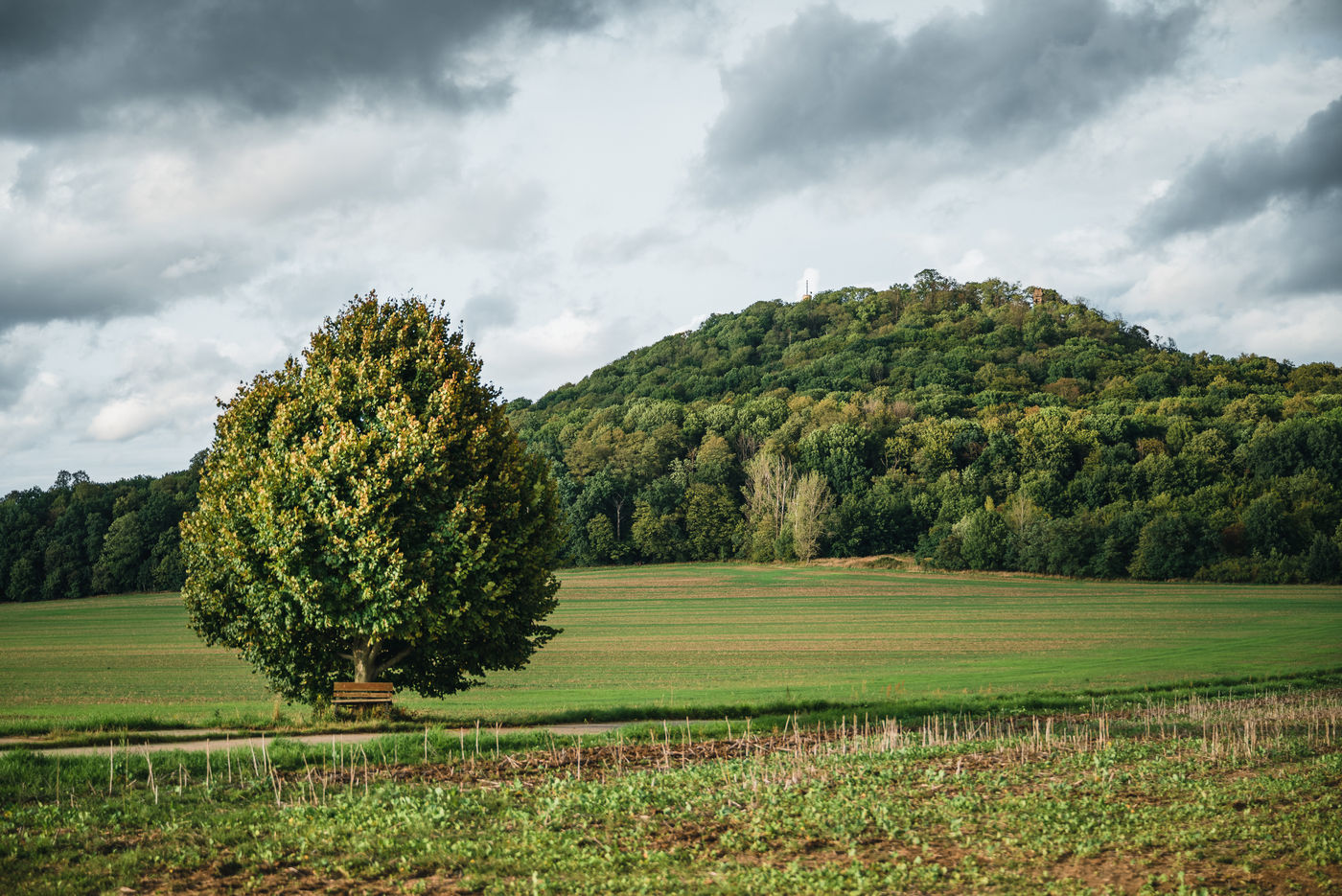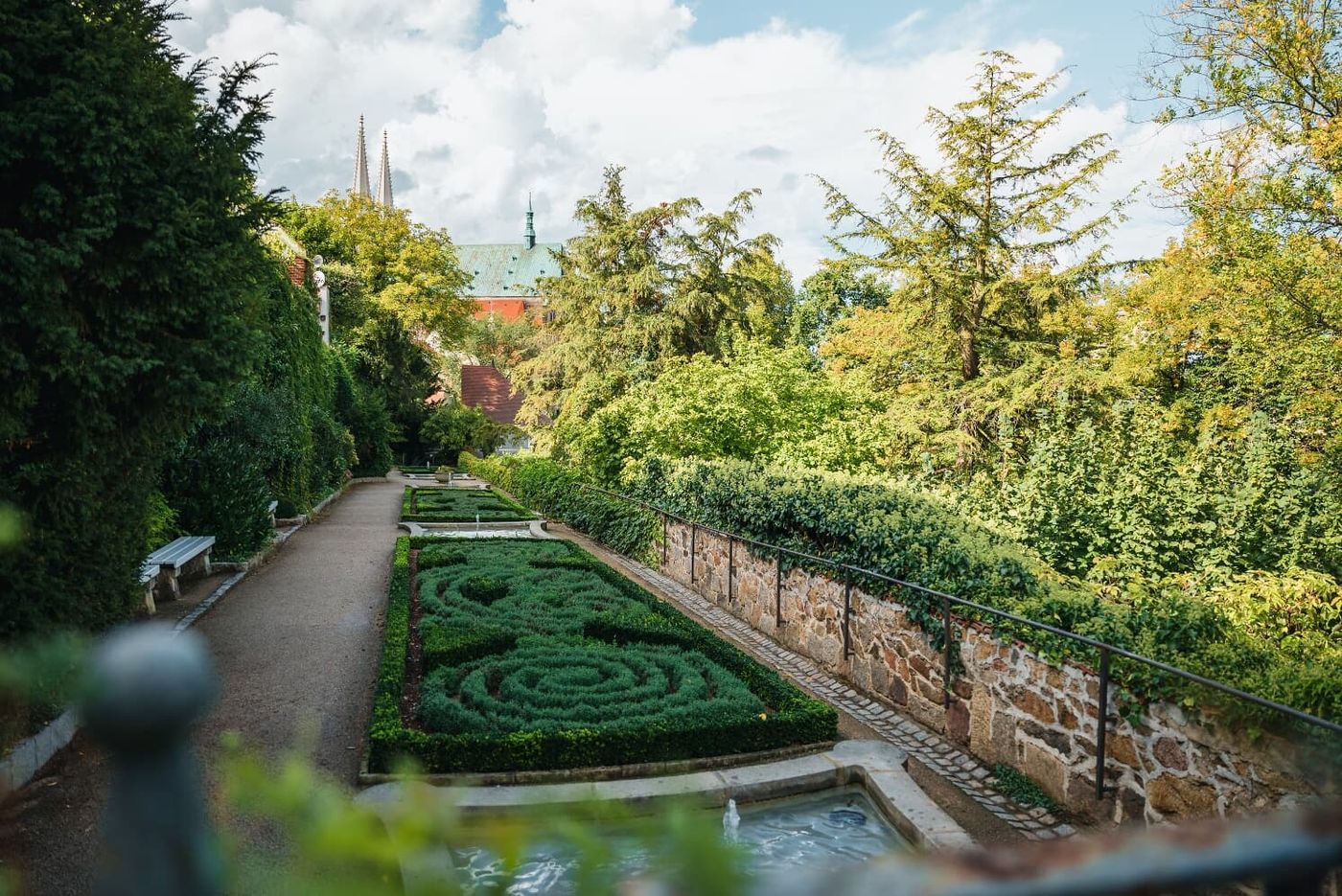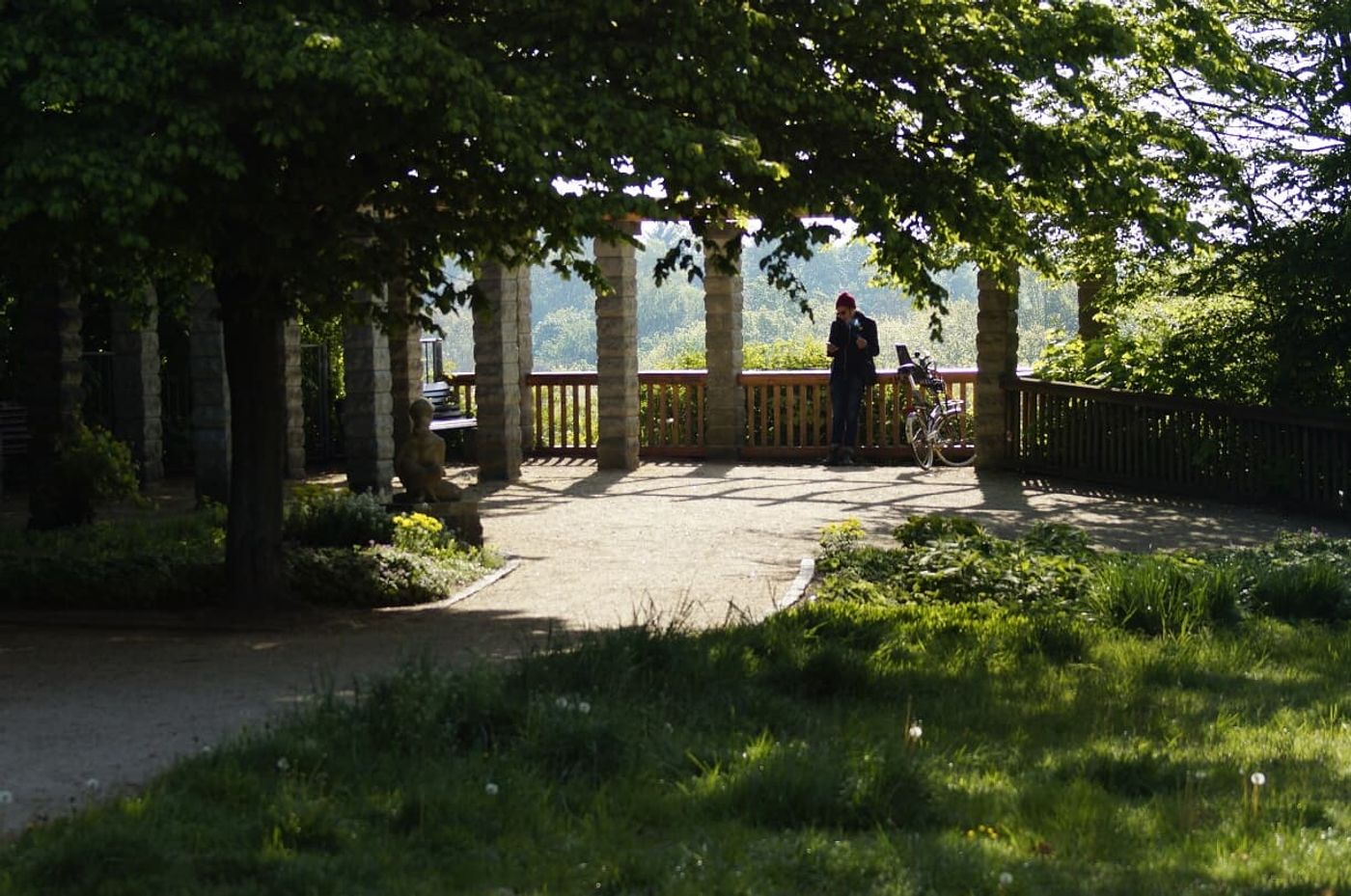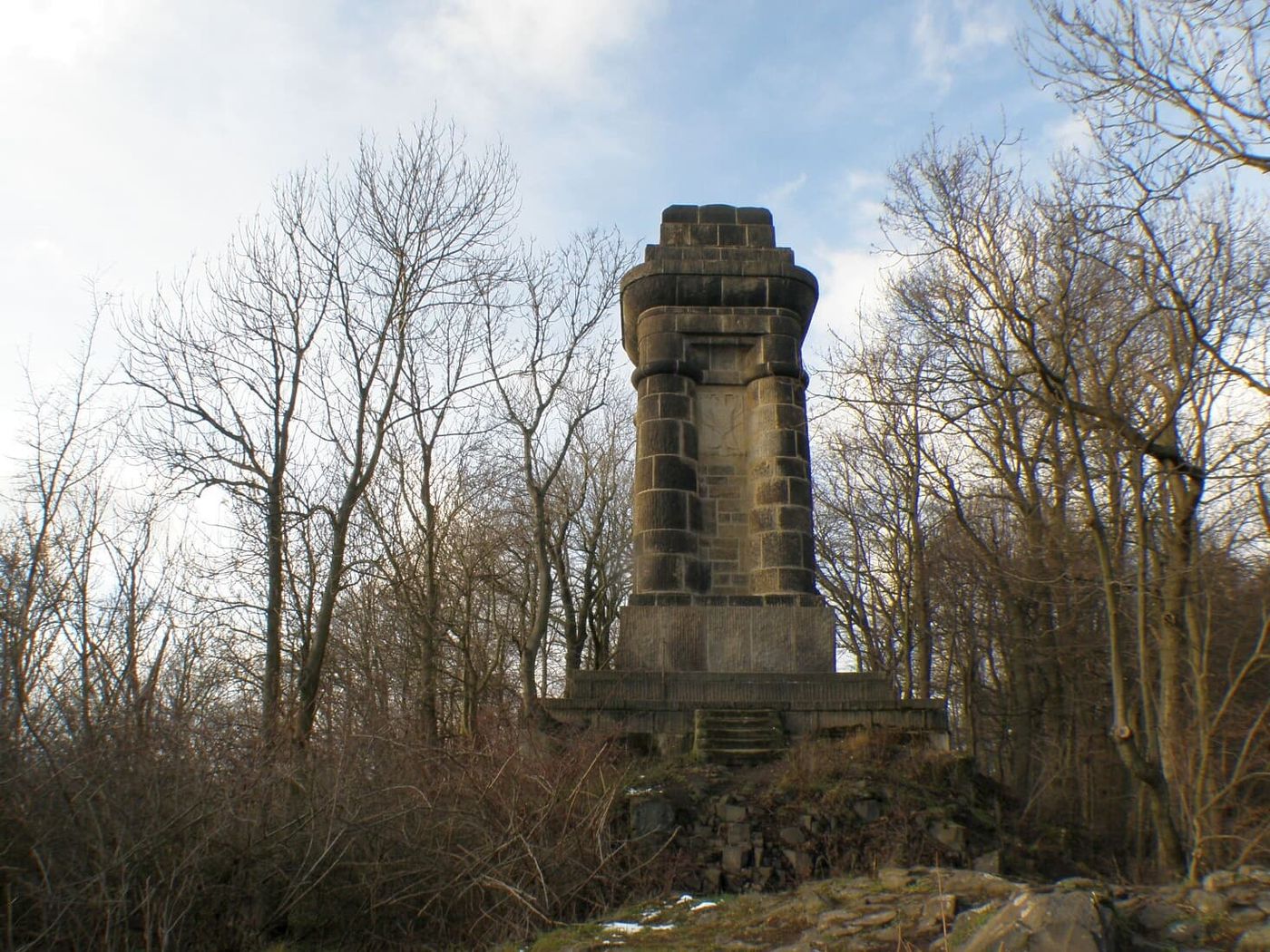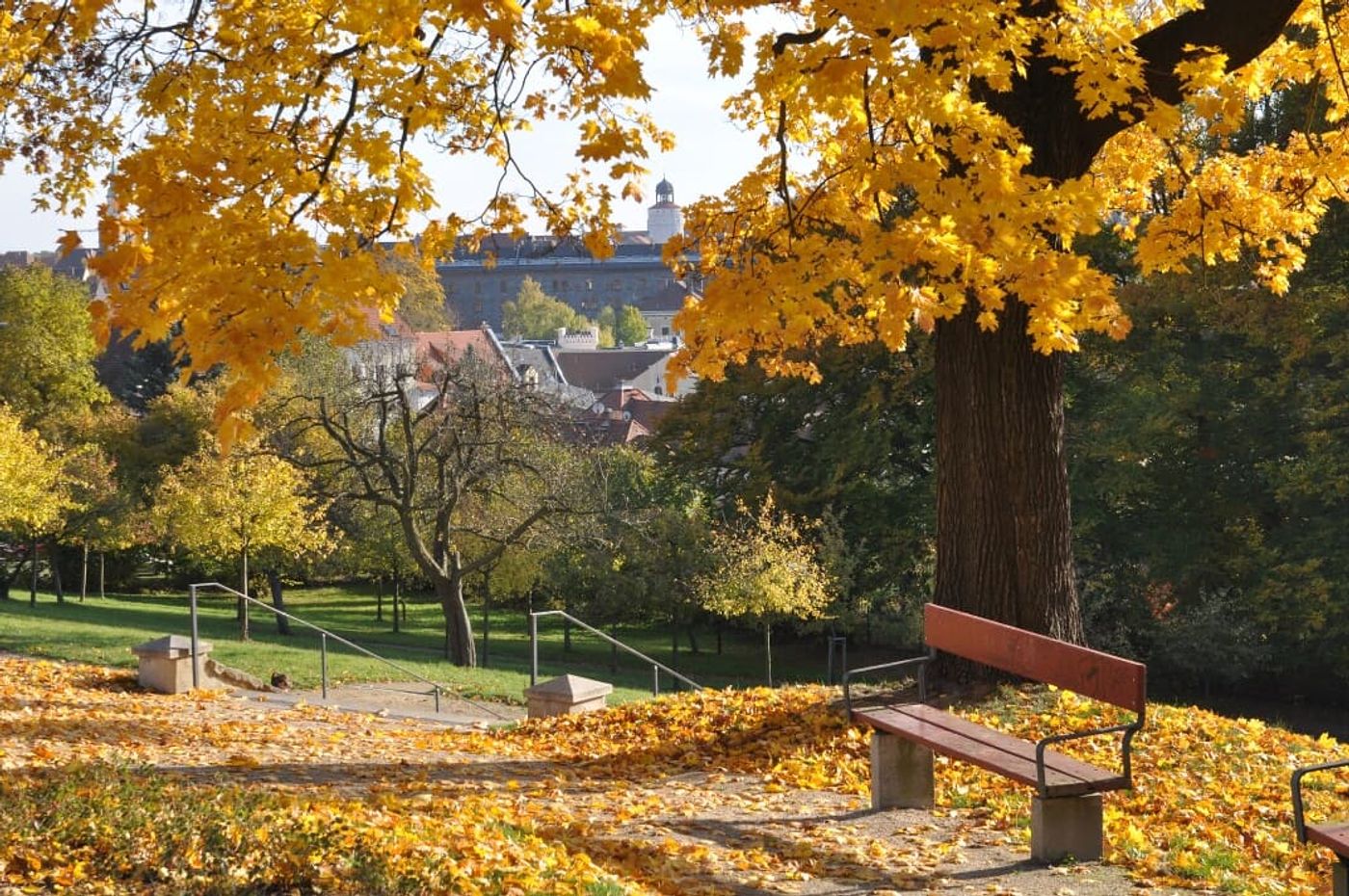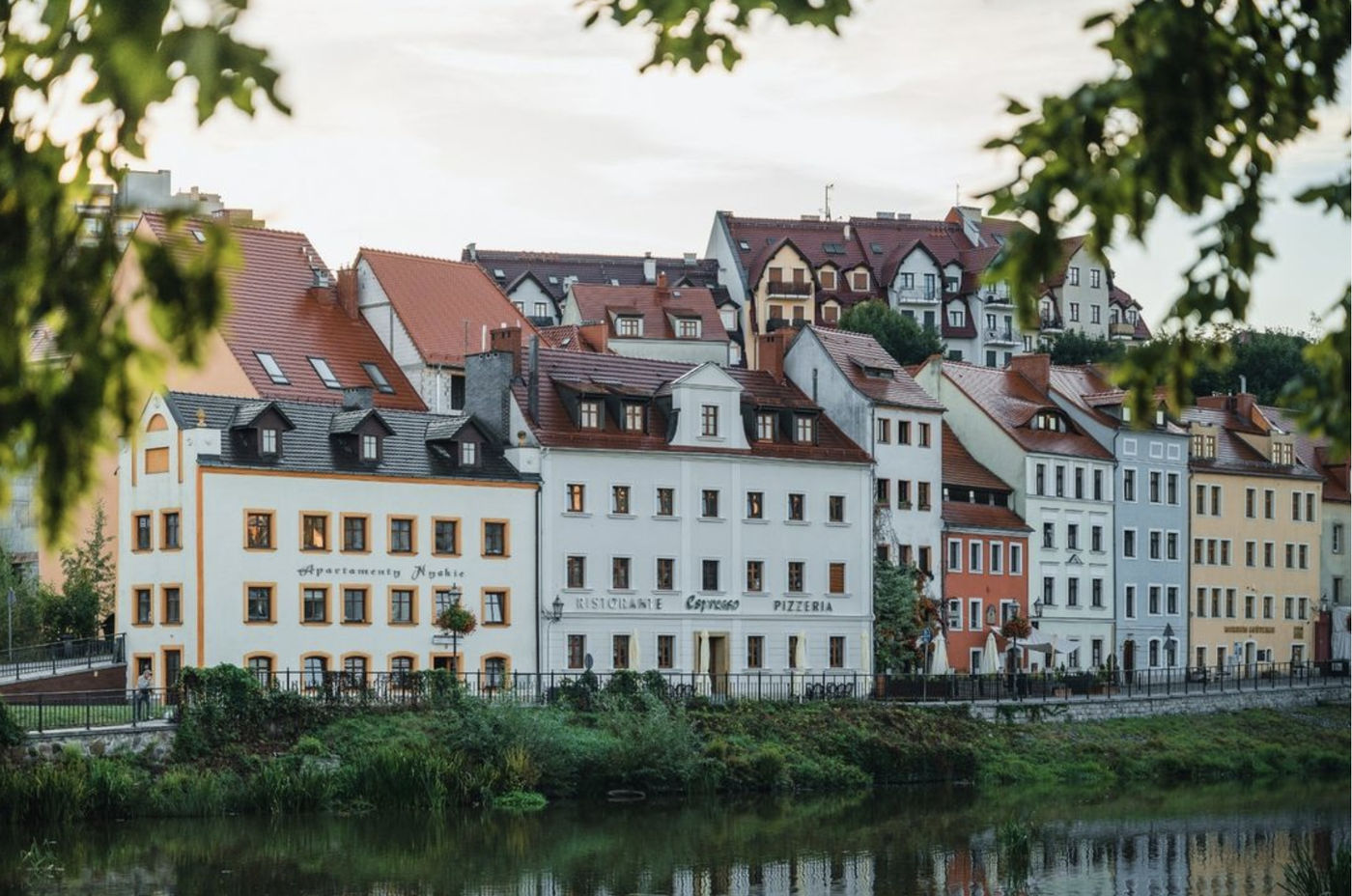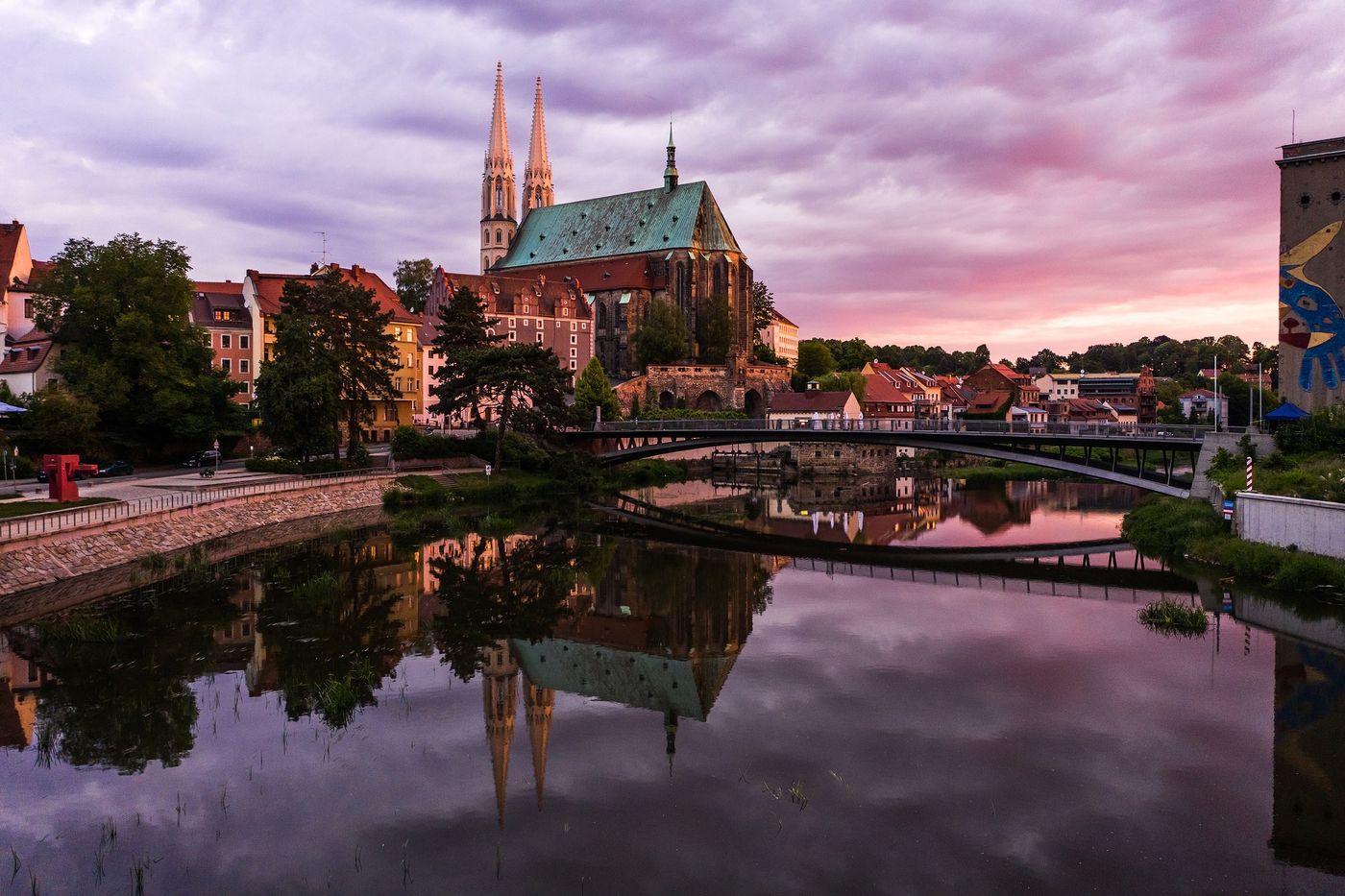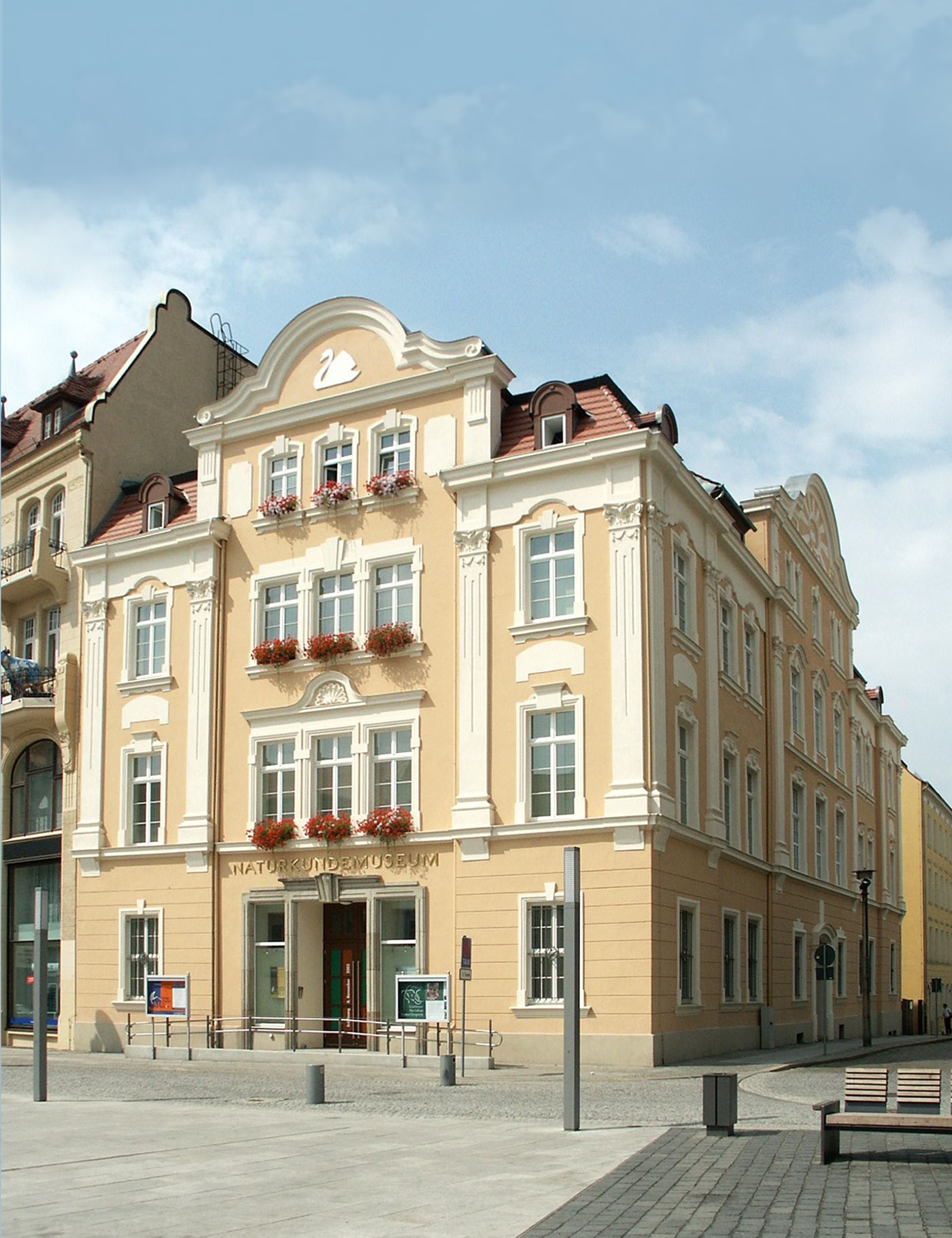Görlitz
Friedenshöhe
The Görlitz administrative reports show that in 1858 the "extension of the facilities on the slope of the Obermühlberg above the Neisse viaduct" took place. The viaduct had been built in the years 1844 to 1847 with material from the quarry of the nearby Limasberg (Königshain/Liebstein), the blockhouse in 1855. It was supposed to serve military purposes at the bridgehead of the viaduct, but proved unsuitable for this purpose. Time had overtaken it. So it soon became an excursion restaurant for the people of Görlitz and their guests.
The name "Friedenshöhe" for the lookout point in front of the blockhouse commemorates the end of the Franco-Prussian War in 1871, in which Prince Friedrich Karl, nephew of the later Emperor Wilhelm I, took part as commander, as well as in the German-German War that ended in 1866.
It was not until 1891 that the monument to Prince Frederick Charles of Prussia was erected on the plateau on the Neisse side in front of the building. Like many bronze monuments, it was sacrificed in 1942 to the armaments industry for the Second World War. The sculpture is said to have been the only monument to this commander in all of Germany. Its creator was Franz Ochs (1852 - 1903), who was also involved in the realization of the design of the "Mussel Minna" by Toberentz in 1886/87.
In the following years, information about redesigns and improvements of the lots at the blockhouse, the square and the plants at the blockhouse appear again and again, the last time in 1940. We have no knowledge of plans. In 1952, the Görlitz garden director Henry Kraft designed the redesign of the Friedenshöhe, now the part of the grounds just southeast of the blockhouse: on the northwest side, above the railroad tracks, a pergola invites visitors to linger; in front of it are beds with perennials and summer flowers. In the mid-fifties of the 20th century, the three approximately life-size cast stone figure groups of the Bautzen artist Rudolf Enderlein (1908 - 1985) were installed there: girl with tomcat, boy with cat, boy with dachshund.
Around a large meadow sparsely covered with copses, paths lead in a gentle curve in the direction of the Neisse River and connect to the vineyards. A revision and addition to the Friedenshöhe took place in 1965, but there were no fundamental changes compared to the situation in 1952. The current state is the result of a repair, which took place in 2003.
